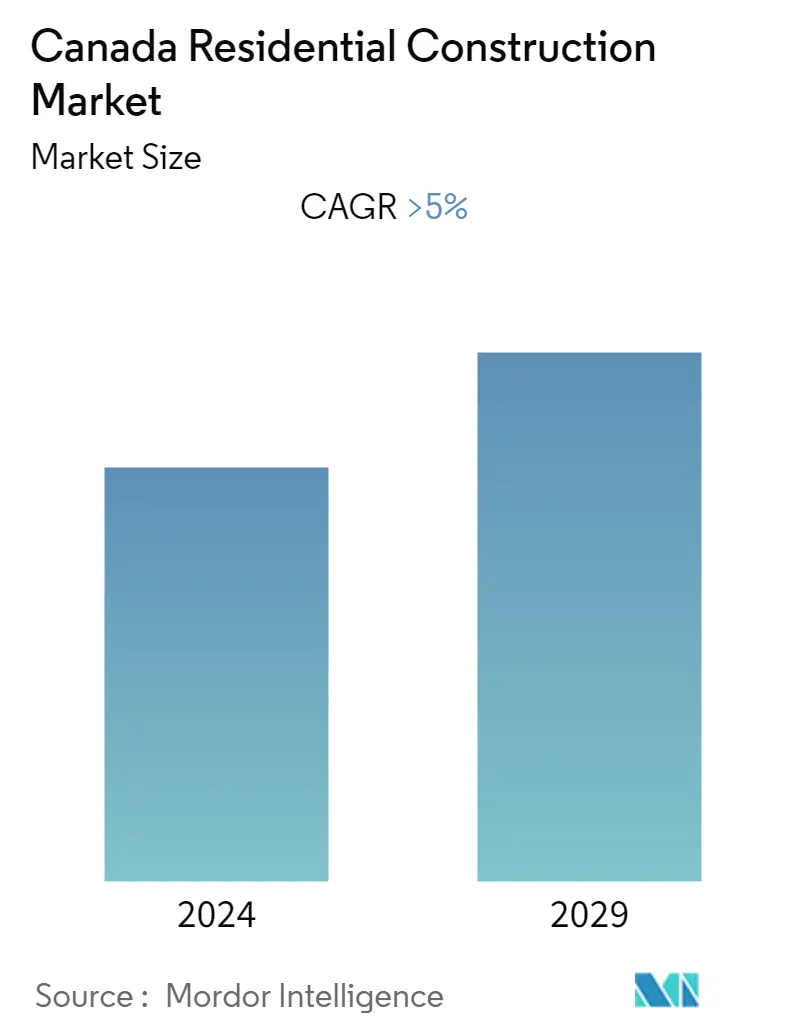Market Size of Canada Residential Construction Industry

| Study Period | 2020 - 2029 |
| Base Year For Estimation | 2023 |
| Forecast Data Period | 2024 - 2029 |
| Historical Data Period | 2020 - 2022 |
| CAGR | > 5.00 % |
| Market Concentration | Low |
Major Players
*Disclaimer: Major Players sorted in no particular order |
Need a report that reflects how COVID-19 has impacted this market and its growth?
Canada Residential Construction Market Analysis
The Canada residential construction market is estimated to register a CAGR of greater than 5% during the forecast period.
- The construction industry was deemed essential and operations were able to continue through government-imposed restrictions and lockdowns. Nonetheless, weak economic activity and uncertainty weighed heavily on the sector. However, despite the slowdown during the initial months of the COVID-19 pandemic, challenging lumber and product material prices, and shortages, the residential construction industry was a key driver in Canada's economy in 2020.
- In the first half of 2022, housing starts were mixed across Canada's largest urban centers. Rental construction was generally resilient, due to strong demand for this type of housing, while developers took a more cautious approach to start new condominium apartment projects, due to the higher interest-rate environment.
- Increases in construction costs and materials shortages were also felt across markets, impacting construction times and the affordability of the housing delivered. After a boom recorded in 2021, housing starts in the country's six largest census metropolitan areas (CMAs) fell 5% in the first half of 2022. The decrease in apartment construction (-9%) is the main cause of this drop. On an annualized basis, however, housing starts in the first half of 2022 remained high compared to the level of construction over the past five years.
- In the Vancouver CMA, housing starts declined by about 25% in the first half of 2022. This slowdown was mainly due to a decrease in the number of condominium apartments started, owing to the greater number of rental apartments started. Vancouver's low vacancy rate, in a more uncertain economic environment for buyers, led residential property developers to turn to the rental segment.
- After hitting historic levels in 2021, apartment starts also declined. Toronto had the largest number of housing starts in the first half of 2022 (19,520, up 7%). While the construction of apartments and row houses increased in Toronto, the construction of generally less affordable housing types (single-detached and semi-detached houses) decreased. In Ottawa, housing starts declined for almost all dwelling types.
- The decrease was particularly significant in the single-detached and condominium apartment segments, where the level of construction was very high between January and June of 2021. Rental apartments, however, recorded an increase, with low vacancy rates stimulating construction. The effects of rising interest rates and construction costs could have an even greater impact on housing starts in the coming months.
